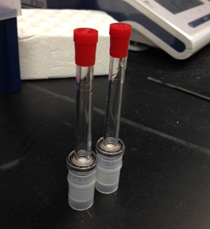Plasma Protein Binding
Plasma protein binding (PPB) plays an important role in the pharmacokinetics (PK) and pharmacodynamics (PD) of a drug.

Free drug levels are closely related to the pharmacological effects of a compound as the principal determinant of tissue distribution, cell entry, receptor interactions, and availability for elimination. At the early stages of drug development, PPB experiments advance understanding of ADME (absorption, distribution, metabolism, excretion) properties to aid in candidate selection.
While equilibrium dialysis remains the gold standard for determination of plasma protein binding and our core makes frequent use of a rapid equilibrium dialysis platform, we previously demonstrated that a mass-balance ultrafiltration method can be successfully applied to many compounds and may be preferable for compounds that show plasma instability or pH dependent shifts in plasma protein binding (1).
Typical Assay Conditions
- Compound: 1 and 10 μM final concentration (and/or Cmax noted in vivo)
- Assay Type: Mass balance ultrafiltration or RED (rapid equilibrium dialysis)
- Analysis: LC-MS/MS
Compound Requirements: 10 mM DMSO stock solution
Wang, C. and N.S .Williams (2013) A mass balance approach for calculation of recovery and binding enables the use of ultrafiltration as a rapid method for measurement of plasma protein binding for even highly lipophilic compounds. Journal of Pharmaceutical and Biomedical Analysis. 75: 112-117. PMCID: PMC3545278
